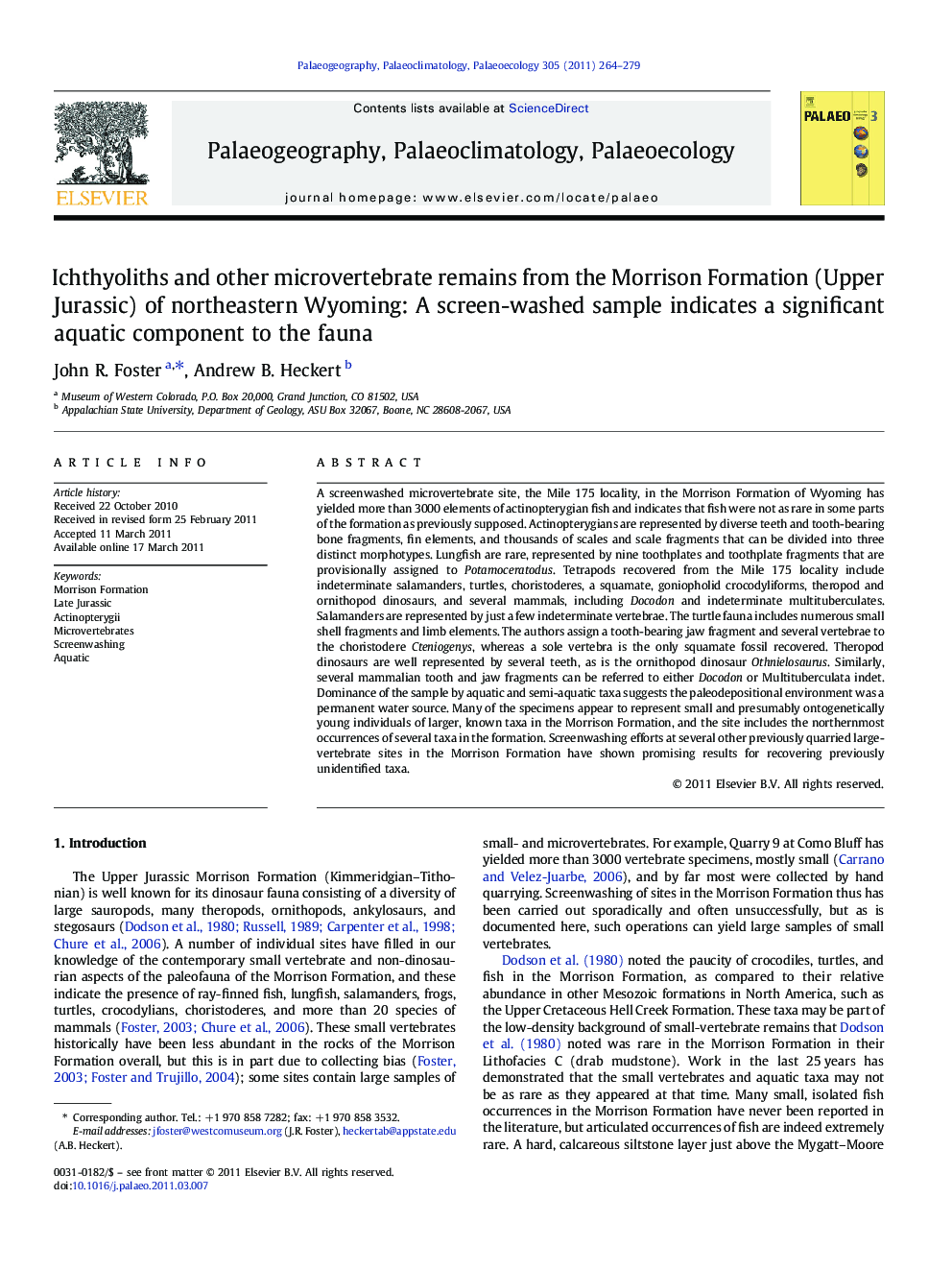| کد مقاله | کد نشریه | سال انتشار | مقاله انگلیسی | نسخه تمام متن |
|---|---|---|---|---|
| 4467372 | 1622256 | 2011 | 16 صفحه PDF | دانلود رایگان |

A screenwashed microvertebrate site, the Mile 175 locality, in the Morrison Formation of Wyoming has yielded more than 3000 elements of actinopterygian fish and indicates that fish were not as rare in some parts of the formation as previously supposed. Actinopterygians are represented by diverse teeth and tooth-bearing bone fragments, fin elements, and thousands of scales and scale fragments that can be divided into three distinct morphotypes. Lungfish are rare, represented by nine toothplates and toothplate fragments that are provisionally assigned to Potamoceratodus. Tetrapods recovered from the Mile 175 locality include indeterminate salamanders, turtles, choristoderes, a squamate, goniopholid crocodyliforms, theropod and ornithopod dinosaurs, and several mammals, including Docodon and indeterminate multituberculates. Salamanders are represented by just a few indeterminate vertebrae. The turtle fauna includes numerous small shell fragments and limb elements. The authors assign a tooth-bearing jaw fragment and several vertebrae to the choristodere Cteniogenys, whereas a sole vertebra is the only squamate fossil recovered. Theropod dinosaurs are well represented by several teeth, as is the ornithopod dinosaur Othnielosaurus. Similarly, several mammalian tooth and jaw fragments can be referred to either Docodon or Multituberculata indet. Dominance of the sample by aquatic and semi-aquatic taxa suggests the paleodepositional environment was a permanent water source. Many of the specimens appear to represent small and presumably ontogenetically young individuals of larger, known taxa in the Morrison Formation, and the site includes the northernmost occurrences of several taxa in the formation. Screenwashing efforts at several other previously quarried large-vertebrate sites in the Morrison Formation have shown promising results for recovering previously unidentified taxa.
Research highlight
► Morrison Formation microvertebrates reveal a surprisingly aquatic fauna.
► Screenwashing yields expected mammal teeth but at some sites also a dominance of fish.
► Aquatic and semi-aquatic taxa dominate these sites in both diversity and abundance.
► Screening picked up particularly small teeth of even relatively large taxa; young individuals.
Journal: Palaeogeography, Palaeoclimatology, Palaeoecology - Volume 305, Issues 1–4, 15 May 2011, Pages 264–279